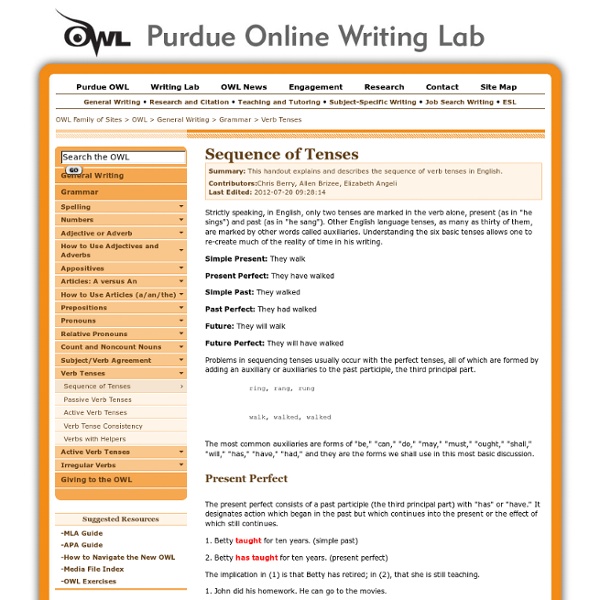Verb Tenses

Verb Tenses
Summary: This handout explains and describes the sequence of verb tenses in English. Contributors:Chris Berry, Allen Brizee, Elizabeth AngeliLast Edited: 2013-02-21 10:34:38 Throughout this document, example sentences with nonstandard or inconsistent usage have verbs in red. Controlling shifts in verb tense Writing often involves telling stories. Even an essay that does not explicitly tell a story involves implied time frames for the actions discussed and states described. Generally, writers maintain one tense for the main discourse and indicate changes in time frame by changing tense relative to that primary tense, which is usually either simple past or simple present. General guideline: Do not shift from one tense to another if the time frame for each action or state is the same. Examples: 1. Explains is present tense, referring to a current state; asked is past, but should be present (ask) because the students are currently continuing to ask questions during the lecture period. 2. 3. 1. 2.
Ten Types of Verbs - Verb Forms and Functions in English
We say that a verb is a part of speech (or word class) that describes an action or occurrence or indicates a state of being. Generally, it makes more sense to define a verb by what it does than by what it is. Just as the "same" word (rain or snow, for example) can serve as either a noun or a verb, the same verb can play a number of different roles depending on how it's used. Put simply, verbs move our sentences along in a variety of ways. Here, by identifying 10 types of verbs, we'll briefly consider some of their more common functions as well. Auxiliary Verbs and Lexical Verbs An auxiliary verb (also know as a helping verb) determines the mood or tense of another verb in a phrase: "It will rain tonight." Does that cover everything verbs can do? Then there are performative verbs, prepositional verbs, iteratives, and reporting verbs. But you get the idea.
Related:
Related:



